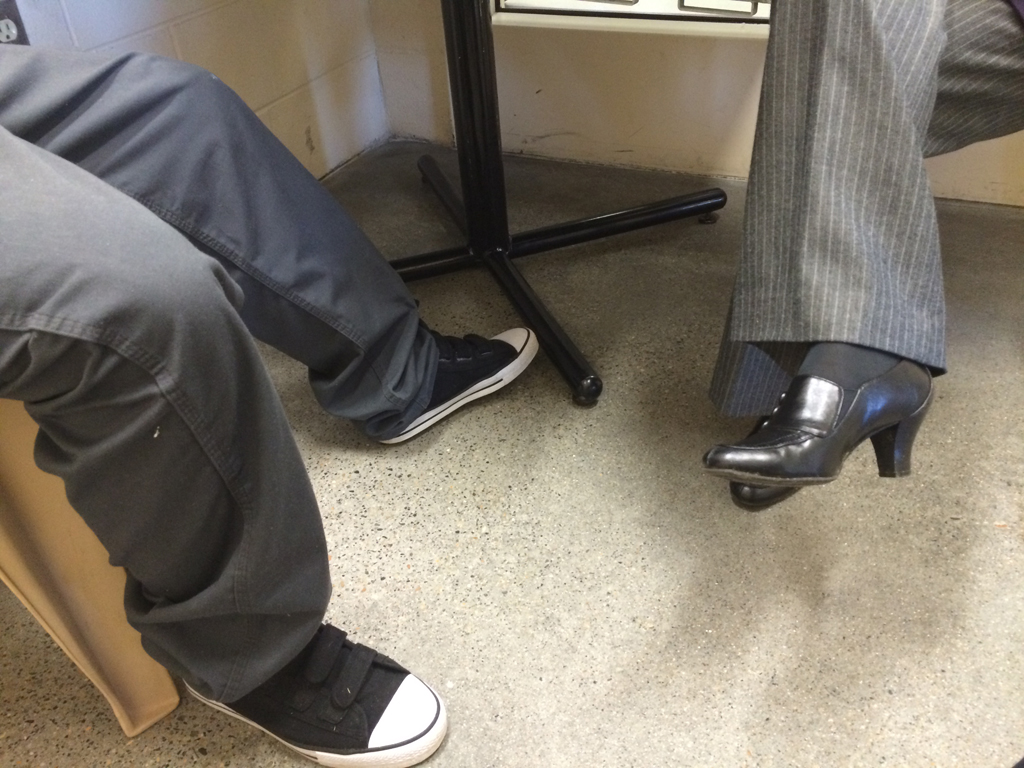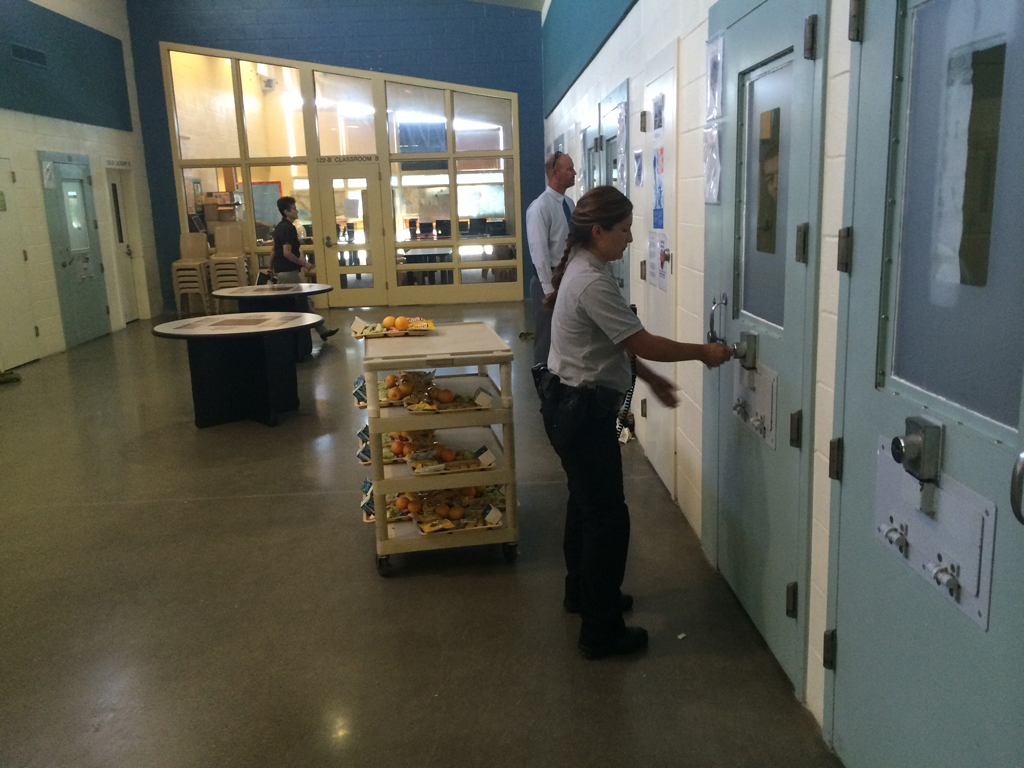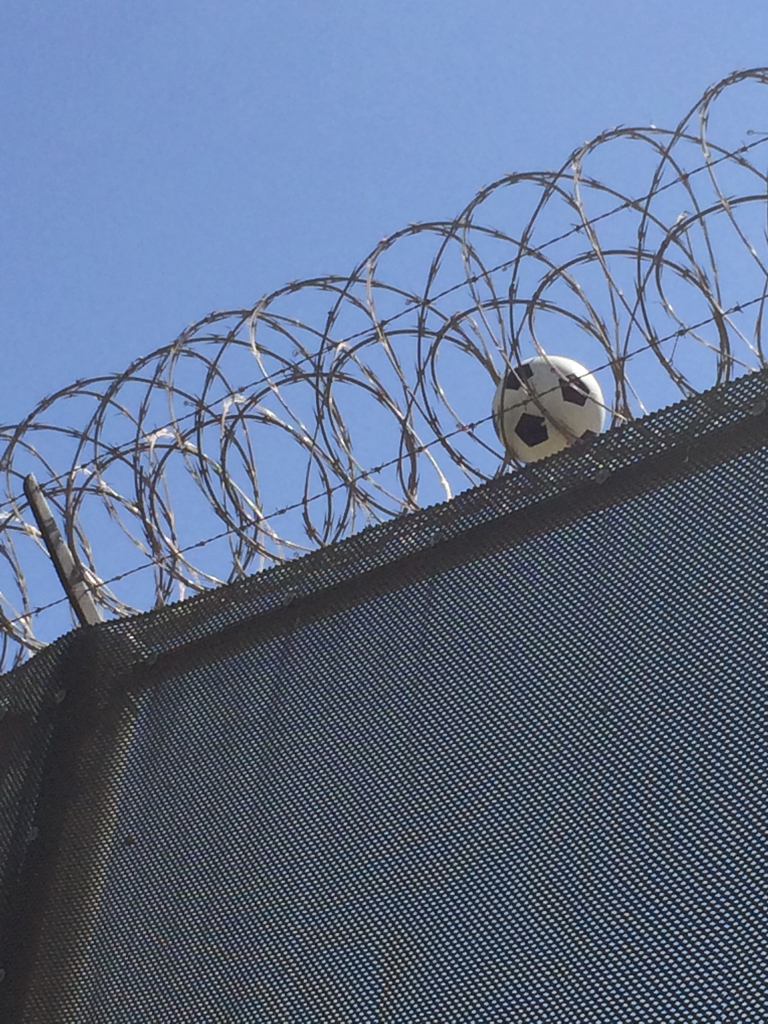Should youth incarcerated in California juvenile halls and camps be entitled to new underwear? Should family and friends be assured that their visits to youth in detention facilities be in person rather than through video screens? Should these youth be guaranteed more time outdoors for exercise and fresh air?
These are some of the concerns that advocates and formerly incarcerated youth are pushing for as California considers revisions to its regulations for its state and county detention facilities, which had a combined average daily population of about 7,000 young people under 25 in 2015. California has the largest number of youth incarcerated in the country, according to the National Center for Juvenile Justice (NCJJ).
 “The hardest part about being locked up was not knowing when I would go home,” a woman from Fresno wrote as part of the process of collecting public comments for the state’s review. “I didn't understand the court process and it felt like I could be in there forever and I had no control. I felt really scared and hopeless and was suicidal a lot of the time I was in there.”
“The hardest part about being locked up was not knowing when I would go home,” a woman from Fresno wrote as part of the process of collecting public comments for the state’s review. “I didn't understand the court process and it felt like I could be in there forever and I had no control. I felt really scared and hopeless and was suicidal a lot of the time I was in there.”
The California Board of State and Community Corrections (BSCC) held its first committee meeting on March 9 in Sacramento in a process that is expected to continue through the end of the year. The full board is expected to make a final decision on revisions to Juvenile Titles 15 and 24 regulations by April 2018.
Executive Steering Committee meetings are designed to provide direction and focus to the revision process by identifying critical issues, providing direction to workgroups that propose revisions and making a final recommendation to the full BSCC Board. The workgroups, which will be composed of advocates, law enforcement and government officials, will be selected in the next few months.
Revisions to California’s regulations were last made in 2014, but there is no particular rule for when a state reviews its regulations for youth facilities, according to the NCJJ.
While California does not necessarily set the standard for innovations in juvenile justice, many states do look to it for what is possible. “Many states may look at California and say, if California can do it with all these kids, maybe we can do it, too,” said Melissa Sickmund, director of the NCJJ.
Advocacy groups and individuals familiar with the juvenile justice system because they have been incarcerated or have had family members or friends incarcerated have submitted public comments with suggestions for the regulation revisions. Nearly 200 comments were made.
Among the advocacy groups involved with the comment period are: Center on Juvenile and Criminal Justice, Children’s Defense Fund-California, Pacific Juvenile Defender Center, Youth Justice Coalition and The California Endowment.*
Advocates say they expect most of their proposals to be accepted because they are designed to update regulations after federal and state laws are newly adopted or recent studies come out. In other cases, advocates want to ban certain procedures in state regulations, even if no one is practicing them.

California Board of State and Community Corrections inspections includes speaking with juveniles about conditions in the facility.
Family visitation
Some of the revisions being proposed are for clarification or to change language, such as “minor” to “youth,” since minor refers to those under 18 and youth could include those up to age 25.
One key suggestion has been to retain and extend the amount of time young people in lockup get for in-person visitations, particularly at a time when adult incarceration facilities in the state have been moving toward video visitations.
“Being able to see family members is one of the critical ways for youths to stay connected to their families,” said Dominque Nong, senior policy associate for the Children’s Defense Fund in Los Angeles.
“Maintaining bonds with family are critically important to ensuring youth are successful upon reentry,” Youth Law Center attorneys Maria Ramiu and Virginia Corrigan wrote in a public comment submitted in January. “Visitation is one of the few evidence-based interventions provided to detained youth.”
Youth in California are currently allowed a minimum of two visiting hours per week from their parent or guardian, but other family members or friends are not allowed to visit. Advocates want the minimum increased to seven hours per week for visits and other visitors allowed.
“Not only should the minimum hours increase considerably, but permissible visitors should include additional family members, friends, significant others and children of incarcerated young people,” Erica Webster, communications and policy analyst at the Center on Juvenile and Criminal Justice in San Francisco, wrote in an opinion piece for the Juvenile Justice Information Exchange.
Ramiu of the Youth Law Center, which runs a program to help incarcerated teen parents to maintain contact with their children and provide them with parenting skills, said the number of parenting and/or pregnant incarcerated youth is not tracked in California or nationally.
Advocates say studies have shown that in-person visitations reduce in-custody violence, reduce recidivism and maintain family ties between incarcerated family members and children. As part of their argument that communication is critical for incarcerated youth, advocates also recommend that youths be allowed to make free telephone calls and send up to 10 letters per week — rather than just two letters — postage-free.
Use of force?
In regard to the use of force, advocates want to eliminate pepper spray, chemical agents and lethal force, and ban the use of restraint devices that attach youth to a wall, floor or other fixture. They also want to limit room confinement to a maximum of four hours and prohibit its use for punishment, coercion, convenience or retaliation by staff. Currently, youth can be confined to their rooms for more than four hours for discipline or to try to “cool down” a situation between youths. That will have to change by January 2018 to conform with a new state law and become a permanent part of the regulations.

Lunchtime at the Stanislaus Juvenile Hall in Modesto, California.
(Most facilities nationwide do not shackle youth while in facilities, but youth are shackled while being transported to court and during court proceeding in 29 states, according to the NCJJ.)
“The changes are needed to bring Title 15 into conformity with accepted professional practice, reduce trauma and risk of physical harm to youth, and to help protect against unnecessary litigation,” Sue Burrell, policy and training director for the Pacific Juvenile Defender Center, wrote in a public comment.
Nong, of the Children’s Defense Fund-California, wrote: “It is well documented that shackling youth unnecessarily traumatizes, stigmatizes and humiliates youth, and runs counter to the rehabilitative principles of the juvenile justice system.”
A strengths-based approach
Advocates are also pushing for better intake and release assessments of youth incarcerated to include not only their problems, but their strengths and needs. They also want regularly scheduled counseling and casework services. Current regulations call for such services to be available but not regularly scheduled. Advocates said that after interviewing youths released from lockup, the young people could have benefited from more counseling while incarcerated.
“When working with justice-involved youth either currently in custody or recently released from these facilities, CJCJ’s juvenile service providers found that youth were not made adequately aware of the services available to them,” Webster of the CJCJ wrote in a public comment, “but were required to request services from facility staff of their
own volition. It is difficult to request services when one does not know which services exist.”
“Juvenile justice experts are in agreement that positive youth development — an approach that emphasizes the strengths and resources of youth, rather than their deficits — must be integrated into juvenile justice facility practice in order to fully realize the juvenile justice system’s goal of rehabilitation and treatment,” Jesse Hahnel, executive director of the National Center for Youth Law, wrote in a public comment.
Many people who were incarcerated as youths voiced their concerns in a survey created by a partnership of youth advocacy groups, asking for a change in regulations that would require the issuance of new, clean underwear, adequate hygiene products and clean bedding. While the comments made in the survey of 77 people were made public in January, specific information, including names, were not made public.
Advocates argue that issuing youth in detention used and stained underwear is demeaning and dehumanizing, and exposes them to disease. Youth may bring their own underwear from home — but most don’t.
“If the baseline is new underwear, then judging the more subjective criteria of stainage is no longer on the table as well,” said Webster of the CJCJ.
“Forcing youth to wear used underwear is a punitive practice that is inconsistent with the underlying philosophy of juvenile court law,” Burrell wrote in a public comment. “Requiring youth in detention to wear used underwear does not meet these standards. It is demeaning and dehumanizing.”
A Los Angeles woman wrote in the survey that hygiene products were “insufficient and so poor in quality as to cause rashes, break-outs, dry skin and especially for African-Americans — hair breakage and loss.”

The time devoted to recreational activities, such as reading, is limited for incarcerated youth. Advocates would like to see that changed to a minimum of four hours per day during the week and seven hours on Saturday and Sunday, or non-school days.
“At the probation camps, the only time we received adequate bedding (mattresses, pillows, blankets) was when the Department of Justice visited the institution,” a Los Angeles man wrote. “They would also make sure everyone had presentable clothing to show the DOJ [Department of Justice] officials that we were being taken care of. The week of the visit, staff would go around the facility checking for mattresses that were not in good condition.
“In regards to the clothing, it was deplorable and the distribution methods for the clothing was just unbelievable. The underwear were stained, the shirts had holes, and the socks were always torn. Again, the only time we ever had decent clothing was when government officials were visiting the facilities. And when we asked for better clothing, the staff would say things like ‘this is what happens when you come to jail’ or ‘if you want to wear better clothes, don’t come here.’”
Housing & recreation
Advocates are also pushing for a change in how youth are housed and supervised. Currently, youth can be housed in open dormitory-style facilities with as many as 30 people in one room, separated by gender. Advocates said they would like to see units with a maximum of 10 beds each. They would also like to see supervisor-to-youth ratios lowered from 12-to-1 to 8-to-1 during the day, and 16-to-1 during sleeping hours, rather than 30-to-1.
Webster of the CJCJ argues that the large dormitory format has been shown to be particularly unsafe because it fosters competition, deepens factions and furthers gang problems, citing a study by The Children’s Defense Fund. The Office of Juvenile Justice and Delinquency Prevention also has recommended the elimination of large dormitories at juvenile facilities.
Currently, youth in juvenile facilities get one hour each day for recreation, but regulations do not require that it be outdoors or involve physical activity. Advocates would like to see that changed to a minimum of four hours per day during the week and seven hours on Saturday and Sunday, or non-school days. Of those additional hours, they want at least one hour of “large muscle activity” to be an outdoor activity.
Other recreational activities can include reading, television, radio, music, video and games. They also want to limit suspensions of recreation activities to no more than 24 hours at a time.
Many of the formerly incarcerated youths said in the survey that detention facilities should be more rehabilitative rather than punitive.
“I felt sad to be in a place that felt so institutional and dark,” wrote a woman from Orange. “I think our youth would benefit from being in a more community type of setting.”
When asked on the survey if there was anything the juvenile facility did a good job with, a Los Angeles man replied: “Showing me how to fight.”
*Editor’s note: The California Endowment funds coverage in California for Youth Today and the Juvenile Justice Information Exchange.
